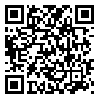BibTeX | RIS | EndNote | Medlars | ProCite | Reference Manager | RefWorks
Send citation to:
URL: http://tumj.tums.ac.ir/article-1-932-en.html
Background: Staphylococcus aureus and Staphylococcus epidermidis are major human pathogens of increasing importance due to the spread of antibiotic resistance. Novel potential targets for therapeutic antibodies are products of staphylococcal genes expressed during human infection. Previously, the secreted and surface-exposed proteins among seroreactive antigens have been discovered. Furthermore, approximately 60 immunogenic proteins were identified and have shown that bacterial surface display is uniquely suited to assess the value of the antigenic epitope.
Methods: Using a bioinformatic analysis, a novel gene family was identified in Staphylococcus aureus and S. epidermidis. NCBI (National Center for Biotechnology Information) BLAST and TIGR search were used for identification of the loci on Staphylococcal genomes.
Results: The members of nine gene family from S. aureus based on a conserved C-terminal domain following an N-terminal domain which varies in sequence and length. Further Blast P searches for paralogues revealed the novel Sca gene family in S. epidermidis has also highly conserved 110 amino acid C-terminal domain. Thus the Sca family has a conserved domain across different genera.
Conclusion: Further studies to determine the role of the conserved Sca domain in ligand binding and demonstration of conserved epitope may establish the domain as a credible target for cross species vaccination.
| Rights and permissions | |
 |
This work is licensed under a Creative Commons Attribution-NonCommercial 4.0 International License. |





